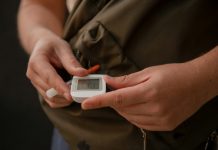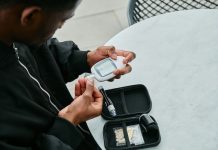
Type 2 diabetes is a chronic condition that affects the way the body processes blood sugar (glucose).
Liver fibrosis is the excessive accumulation of extracellular matrix proteins including collagen that occurs in most types of chronic liver diseases.
In two recent studies from Yale University, scientists found a new way to reverse type 2 diabetes and liver fibrosis.
Both diseases—type 2 diabetes and fibrosis of the liver and other organs—are common, but have few treatment options.
Around 28 million people in the US have type 2 diabetes, characterized by high blood sugar levels, a condition that can lead to many other health problems, including heart disease, stroke, and kidney failure.
Cirrhosis is one of the leading causes of death worldwide and is marked by liver fibrosis—a buildup of scar tissue on the liver.
Several drugs, such as metformin, are currently available to control blood sugar levels in patients with diabetes.
But these have a range of unpleasant side effects, and patients can develop resistance to these drugs. And there is little medical relief for fibrosis sufferers.
In the first study, the team found an important connection between how the body responds to fasting and type 2 diabetes.
Fasting “switches on” a process in the body in which two particular proteins, TET3 and HNF4a, increase in the liver, driving up the production of blood glucose.
In type 2 diabetes, this “switch” fails to turn off when fasting ends, as it would in a nondiabetic person.
The researchers hypothesized that if they could “knock down” the levels of these two proteins, they could stop diabetes from developing.
They injected mice with genetic material known as small interfering RNAs (siRNAs) packaged inside viruses that targeted TET3 or HNF4a.
They found that blood glucose and insulin dropped significantly—effectively stopping diabetes in its tracks.
In the second study, the researchers looked at how TET3 contributed to the development of fibrosis in the liver and found that the protein was involved in fibrosis on multiple levels.
Almost all fibrosis, regardless of the organ involved, starts from abnormal protein signaling.
The researchers discovered that TET3 plays a role in the fibrosis signaling pathway in three different locations—and acts as an important regulator in fibrosis development.
This means there are likely opportunities to develop drugs that inhibit TET3 to slow or reverse fibrosis.
The next step will be to identify where to best target TET3 and HNF4a and to develop the most effective siRNAs or small molecules to treat type 2 diabetes or fibrosis.
The team has filed for a patent related to the discoveries with support from the Yale Office of Cooperative Research.
If you care about diabetes, please read studies about high vitamin D levels linked to lower risk of type 2 diabetes, and brown rice and white rice affect the diabetes risk differently.
For more information about nutrition, please see recent studies that Keto diet could benefit overweight people with type 2 diabetes, and results showing Mediterranean diet could help reduce the diabetes risk by 30%.
The study was conducted by Yingqun Huang et al and published in Nature Communications and Cell Reports.
Copyright © 2022 Knowridge Science Report. All rights reserved.



